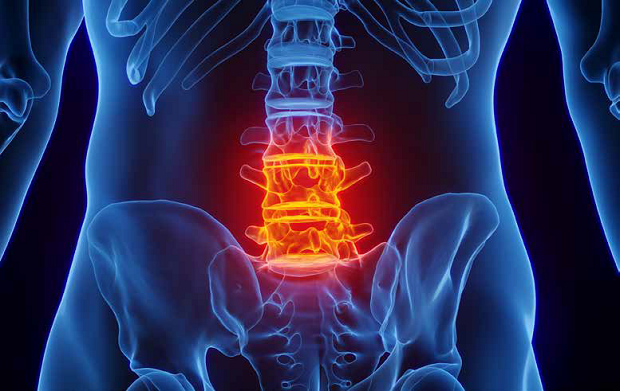
Ankylosing spondylitis often causes pain and stiffness in the back and neck. Awareness is key to getting the right help quicker.
Ankylosing spondylitis (AS) is a chronic condition that is commonly misdiagnosed as mechanical back pain. Its low prevalence means many people, including healthcare professionals, have a lack of familiarity and knowledge, which prevents AS patients from getting proper treatment early. AS is an arthritic condition caused by the immune system attacking one’s own body. It begins with inflammation around the bones in the spine or joints. There is pain and stiffness in the back, neck and sometimes hips and heels. It can also produce eye problems, skin rashes and/or gastrointestinal symptoms in some cases. People afflicted with AS may also feel feverish and fatigued.
AS can make it hard to do simple things, such as getting dressed, getting up from a sitting position and looking from side to side. If the bones in your spine have fused together, you could be at risk of serious neck or back injury.
Though it can affect anyone, AS development has a genetic predisposition. The prevalence of AS parallels that of HLA-B27, a gene that increases the individual’s susceptibility of getting the condition. Onset of AS usually occurs in the teenage years, but it can begin in people up to around 50 years old. Globally, it is more common in males than females.
The pain usually starts in early adulthood,
before age 40, comes on slowly and lasts
for over three months. It feels better with
movement and is worse after resting. The
back may also become less flexible, making it
harder to bend forward.

There is no single test for ankylosing spondylitis, said Dr Stanley Angkodjojo (above), Consultant, Rheumatology, Department of General Medicine, Sengkang General Hospital. “But your doctor or nurse should be able to tell if you have it by learning about your symptoms, doing an examination and using imaging tests like x-rays to look at your bones and joints.” A blood test can also be conducted to look for the presence of the HLA-B27 gene.
Knowledge is power
Awareness of the AS condition can lead to a more timely diagnosis for those suffering from backaches and joint pains, and better control of the condition.
According to a local study, the mean disease duration before the actual diagnosis of AS is about 10 years. Such delays mean AS patients suffer for years before getting appropriate help. It also affects their quality of life, with some even developing depression because they do not have the right tools and knowledge to monitor their symptoms.
“Knowledge can empower people to continue consulting with the right physicians until their condition is properly managed and disease progression can be delayed. Patients diagnosed with AS should speak to their doctor about the latest treatment options. It is important for patients to partner with doctors to understand the disease in-depth and be informed about how the condition can be better managed to enable an enhanced quality of life,” said Dr Angkodjojo.
For those who are genetically predisposed, prevention may not be possible, but they can take steps to prevent complications and feel better while living with the condition. Correct treatment and lifestyle changes can help relieve symptoms, thus allowing them to do everyday activities and keep their condition from causing other problems.
Exercise is an important part of treating AS. Stretches and gentle exercises can strengthen the muscles and prevent some of the stiffness. It is especially important to work on posture because AS can cause the head to tilt forward in a hunchback posture. Quitting smoking helps. Smokers with ankylosing spondylitis may be more likely to have breathing problems. Smoking can also worsen AS and makes the condition harder to control. Meanwhile, consuming plenty of calcium and vitamin D helps keep bones from getting weak.
AS patients may be prescribed nonsteroidal anti-inflammatory drugs to relieve pain and stiffness. Biologics, which are genetically engineered proteins created from living organisms that mimic normal biological functions, are another option. This type of targeted therapy is aimed at specific proteins in the immune system that cause inflammation, and can reduce back pain and morning stiffness.
Get the latest updates about Singapore Health in your mailbox! Click here to subscribe.













 Get it on Google Play
Get it on Google Play